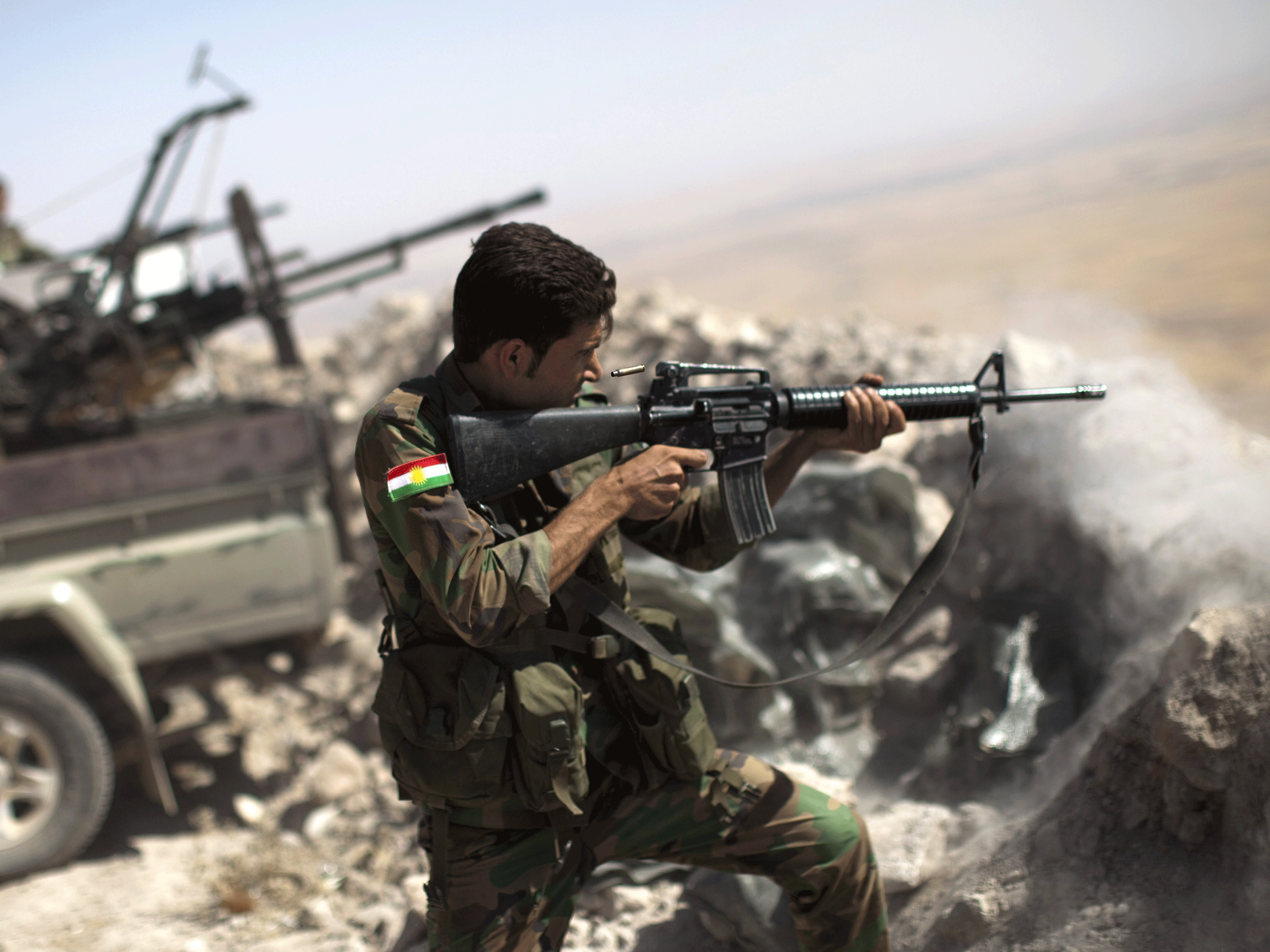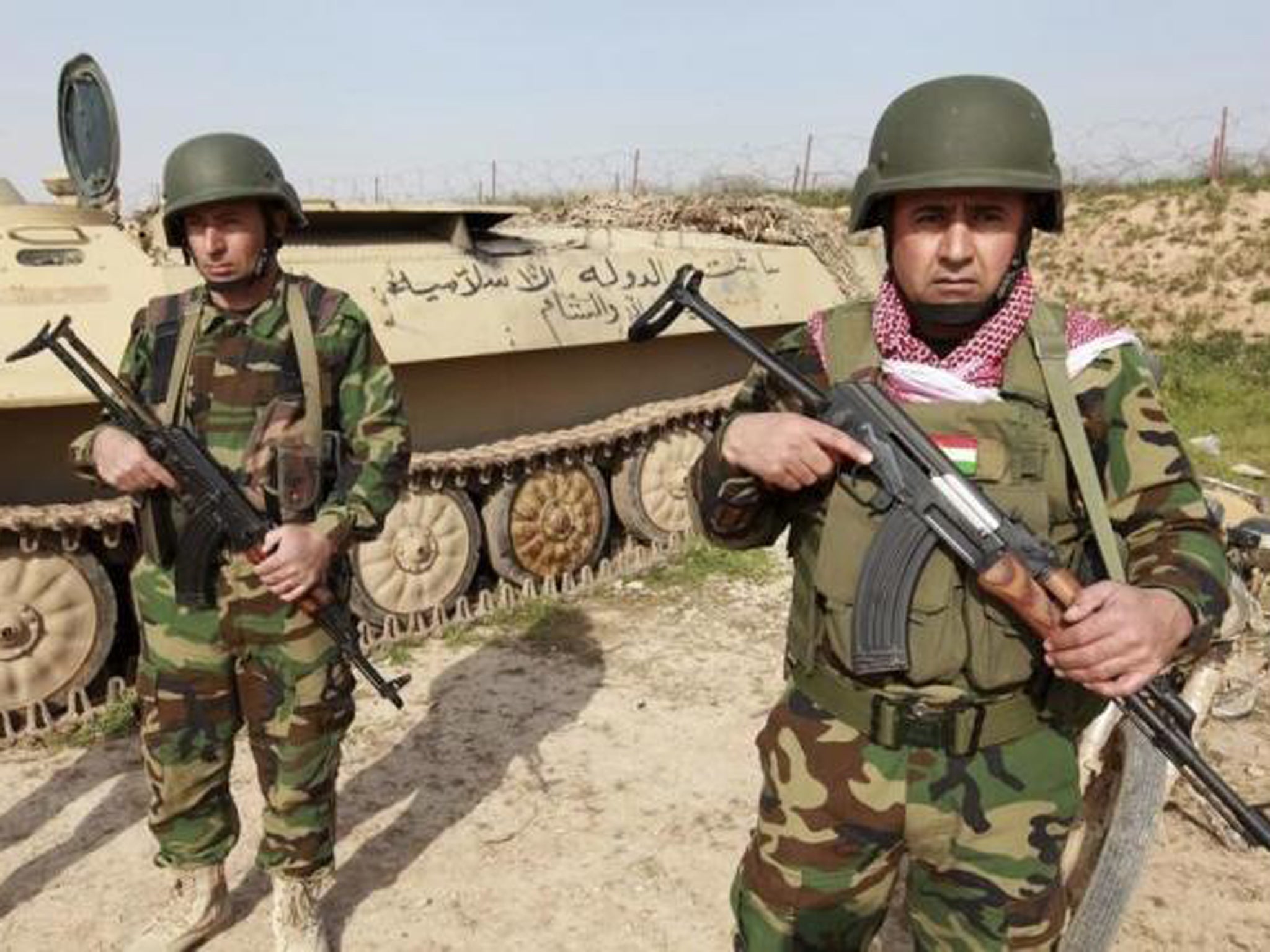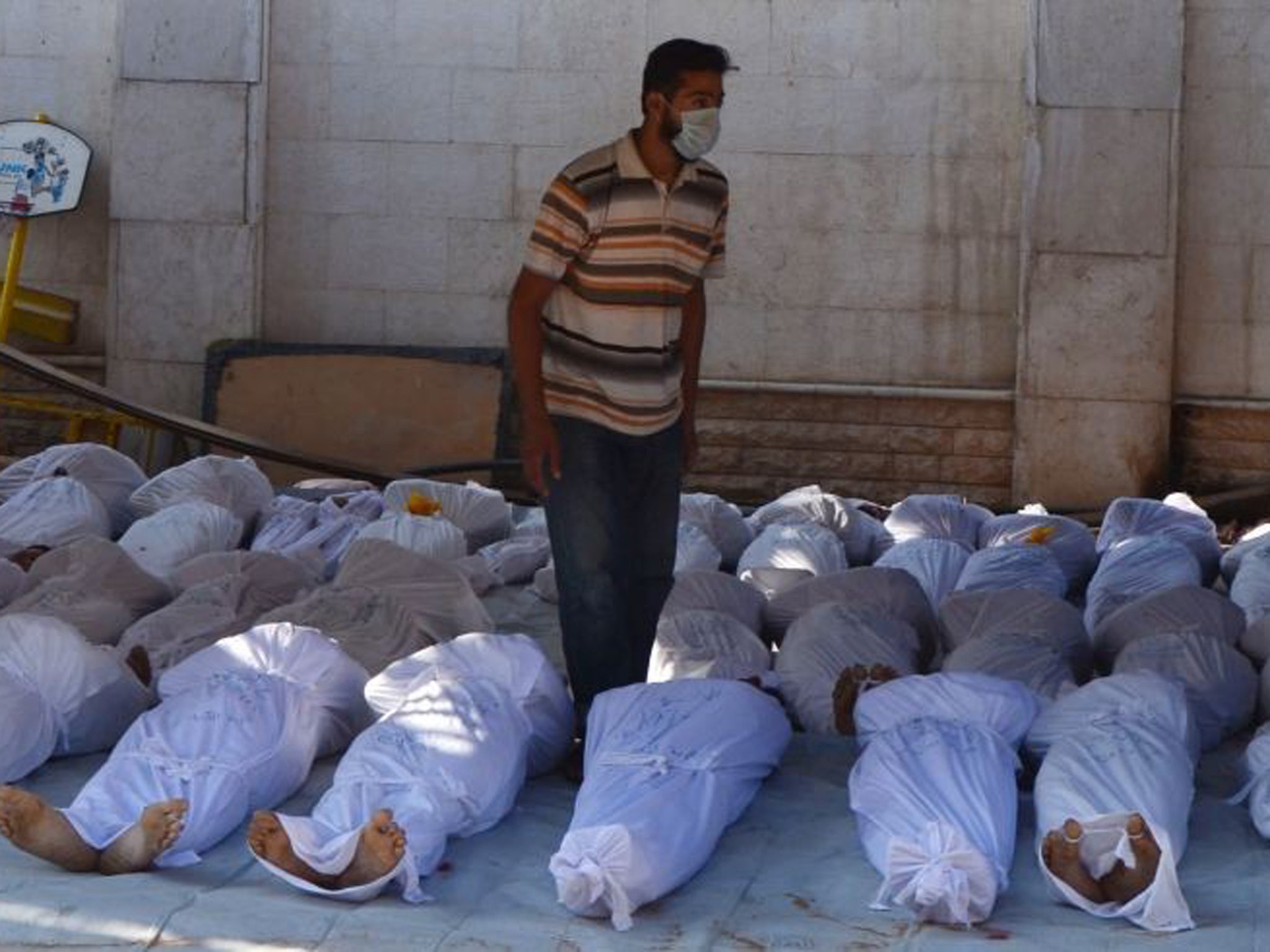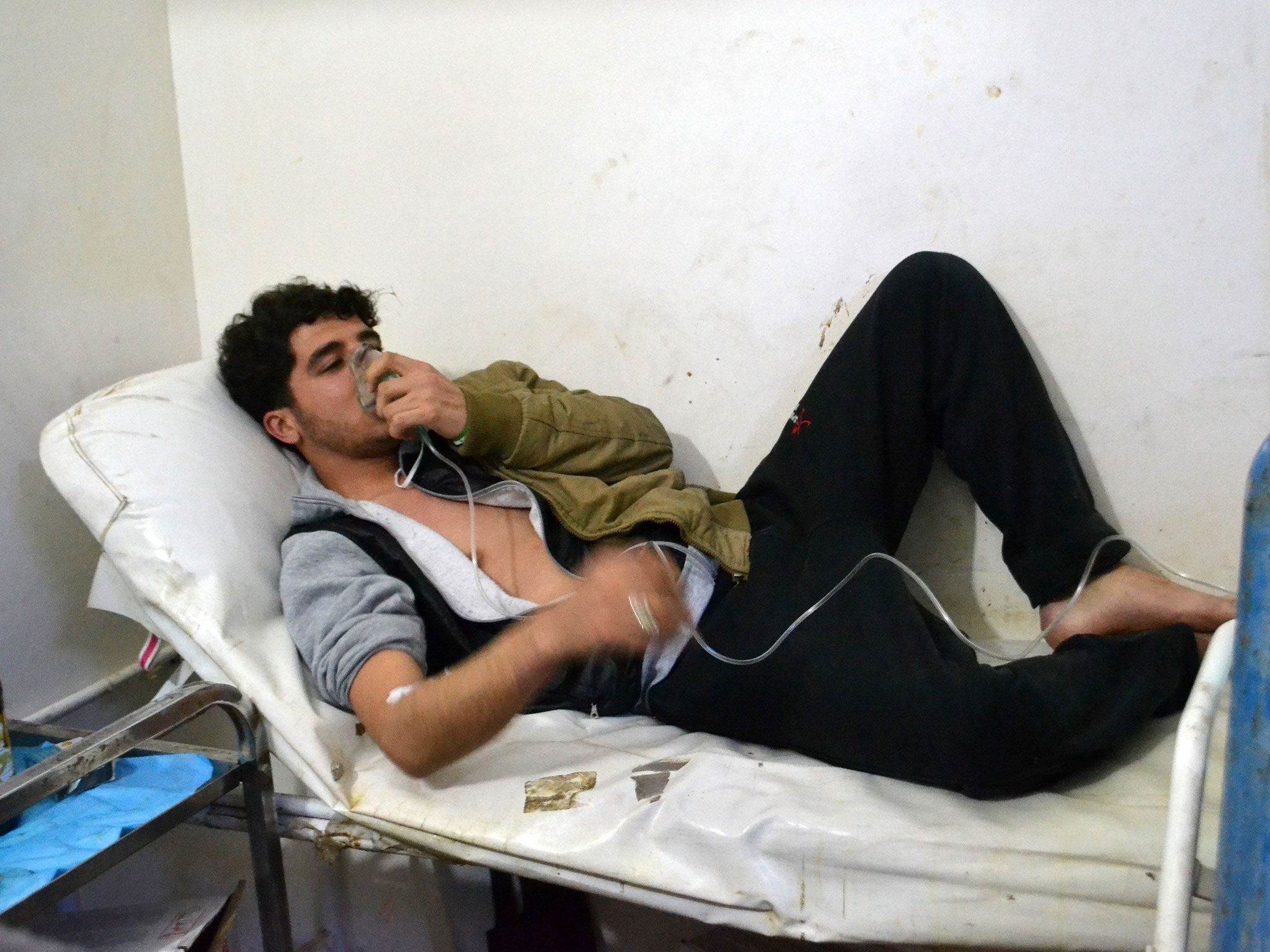Isis 'manufacturing and using chemical weapons' in Iraq and Syria, US official claims
Kurdish fighters have reported numerous chemical attacks in both countries, possibly using mustard agents

Your support helps us to tell the story
From reproductive rights to climate change to Big Tech, The Independent is on the ground when the story is developing. Whether it's investigating the financials of Elon Musk's pro-Trump PAC or producing our latest documentary, 'The A Word', which shines a light on the American women fighting for reproductive rights, we know how important it is to parse out the facts from the messaging.
At such a critical moment in US history, we need reporters on the ground. Your donation allows us to keep sending journalists to speak to both sides of the story.
The Independent is trusted by Americans across the entire political spectrum. And unlike many other quality news outlets, we choose not to lock Americans out of our reporting and analysis with paywalls. We believe quality journalism should be available to everyone, paid for by those who can afford it.
Your support makes all the difference.Evidence is mounting that Isis could be both manufacturing and using chemical weapons in Syria and Iraq.
Months of reports by Kurdish forces fighting the so-called Islamic State sparked the start of an investigation by the US and a United Nations probe earlier this year.
No findings have been announced by either group but an anonymous UN official has told the BBC that at least four attacks using powdered mustard agents have been documented on both sides of the Syria-Iraq border.

“We assess that they have an active chemical weapons little research cell that they're working on to try and get better at it,” the official said.
Intelligence analysts have also suggested that Isis may be using stockpiles found in Syria and Iraq during the group’s rampage last year, as the group gained territory to establish its self-declared Caliphate.
But any caches in Iraq are deemed unlikely to have gone undetected in the US military’s decade-long military campaign in the country, and Syria was forced to give up its chemical weapons under the threat of air strikes two years ago.
A UN-backed deal that saw the Syrian government hand over 1,180 tonnes of declared toxic agents and chemicals to the Organisation for the Prohibition of Chemical Weapons (OPCW) by June 2014.

Kurdish fighters in both Iraq and Syria have reported the alleged use of chemical weapons by Isis.
Describing an attack in August, a statement by the Peshmerga General Command said: “The terrorist Daesh [Isis] launched 45 120mm-mortar shells tipped with chemical heads on Peshmerga positions, which led to the injury of a number of Peshmerga forces with burns on different parts of their bodies.”
Germany’s Defence Ministry, which had been training the Kurds near the sight of the attack in Makhmour, said at the time that fighters also suffered breathing difficulties and that officials had “indications that there was an attack with chemical weapons”.
The descriptions fit with the effects of mustard agents, which were initially used in chemical warfare during the First World War, and were deployed prolifically by Saddam Hussein’s regime in the Iran-Iraq war.
The OPCW describes effects including burns, blisters, severe damage to the eyes, respiratory system and internal organs.
“Mustard agent is very simple to manufacture and can therefore be a ‘first choice’ when a country decides to build up a capacity for chemical warfare,” a description on the agency’s website reads.
“In its pure state, mustard agent is colourless and almost odourless… it gives no immediate symptoms upon contact and consequently a delay of between two and 24 hours may occur before pain is felt and the victim becomes aware of what has happened.
“By then cell damage has already been caused.”
Effects can range from mild irritation and inflammation, to blisters, vomiting, diarrhoea, severe breathing difficulties, blindness and - in rare cases – death. The effects of exposure can last for four decades.
Last month, the US National Security Council said Washington was taking allegations of Isis using chemical weapons “very seriously” and seeking more information.
“We continue to monitor these reports closely, and would further stress that any use of chemicals or biological material as a weapon is completely inconsistent with international standards and norms regarding such capabilities,” a spokesperson said.

Isis is not believed to be the only party using chemical weapons – accusations have also been levelled at the Syrian regime and rebel groups.
The demand for Bashar al-Assad’s government to give up its stockpile was triggered in part by civilian deaths in the country’s civil war, including chemical attack on Ghouta in August 2013.
Between 300 and 1,700 civilians were killed when the suburb has hit with rockets containing the nerve agent sarin. The Syrian government and opposition forces blamed each other for the atrocity.
Despite the Assad regime’s disarmament, reports continue of chemical attacks on civilians allegedly carried out by the country’s military.

Footage of one atrocity in Sarmin, near Aleppo, showed children among those choking to death after inhaling suspected chlorine gas in March and the OPCW has found “compelling confirmation” that it was still being used as a weapon late last year.
The UN has launched an investigation to determine which groups are involved in the use of chemicals as weapons in Syria and work is set to begin after Russia lifted its opposition to the probe on Thursday and it was approved by the Security Council.
Secretary-General Ban Ki-moon promised the “speedy establishment” of an investigative team, alongside the OPCW, and urged full cooperation by all parties.
The body, established for at least a year, will be tasked with identifying “individuals, entities, groups, or governments involved in the use of chemicals as weapons, including chlorine or any other toxic chemical,” in Syria.
Join our commenting forum
Join thought-provoking conversations, follow other Independent readers and see their replies
Comments